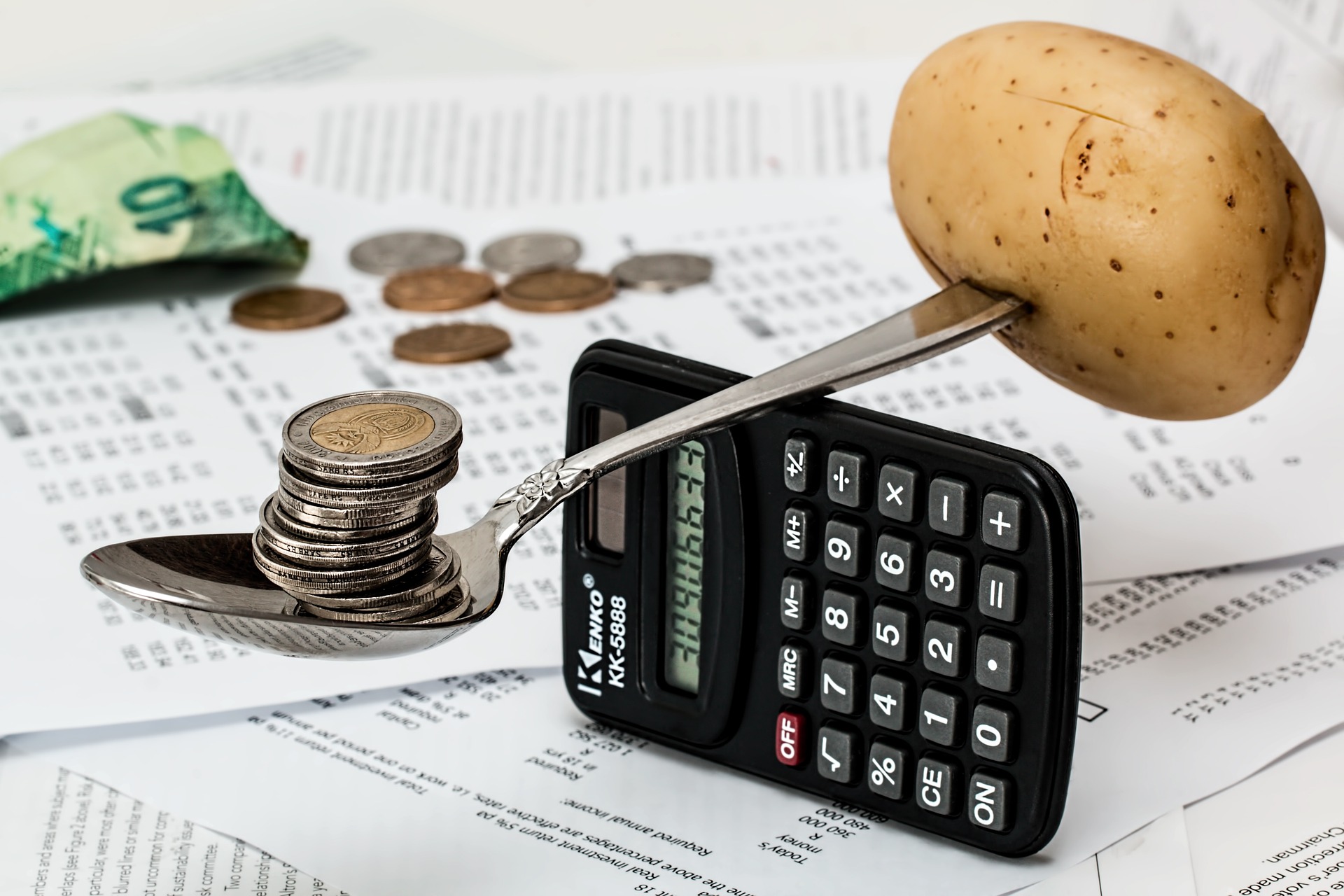How to Price a Product
Pricing is – arguably – the most important part of the product creation process. After all, you need a price to get money.
Universally, that’s considered a nice thing to have.
But, the problem is pricing is often the hardest part.
This is because you’ve poured your blood, sweat, tears, other bodily fluids and the total coffee export of a small nation into creating a product or service…
And the market is fickle… and this guy sells the exact same thing for 80% less (how does he do that?!)… and meanwhile this newbie is making bank…
So how does it work?
Luckily, putting a price on your work boils down to three easy steps – but before you dive in, it’s worth dissecting why pricing is so hard.
Why is Pricing a Headache?
Put simply, it’s because humans are irrational.
On your customers’ side, they always want the best value for money. But value to person A isn’t going to mean as much as to person B, and the things real people value are often wildly illogical.
For example, a sweatshirt that says “I Love Dolphins” won’t be as valuable to someone who has a phobia of dolphins, unless in that moment they’re cold enough to really, really need a sweatshirt. Not only that, they have to have enough cash not to mind losing it on something they’re likely to chuck out when they’ve used it.
But creators are irrational, too. It’s simple to sit down and log the hours spent creating something. You might even have an industry standard cost per hour, or be able to put a price on your experience. All of that is good.
But what about those 3am strikes of inspiration when you spent 45 minutes sketching out your ideas? Or all those minutes daydreaming solutions while waiting in line? Are you wanting to get paid for going to see that David Lynch movie with your girlfriend, when a throwaway comment about the severed ear triggered a breakthrough in your marketing plan?
You can’t price everything. So where do you start?
There’s no hard and fast formula. (The first person to come up with that will be able to put any price she wants on it.)
But even if there was, it would be hard to justify a one-size-fits-all solution when every product – and creator – is special.
Your product is unlike anything else. So, you should always go through these steps when creating something that needs a new price.
Ready to start?
Step 1: Do Your Research
Thousands of entrepreneurs and small business owners have already done the work for you. Google or get out on the streets, and note down what your competitors and peers are charging for their products or services.
If a price strikes you as high or low, ask yourself: why? What is it about the positioning or appearance of the offer that’s making it seem higher or lower value? Are you letting prior knowledge of the person influence your opinion, or are you approaching them in a customer mindset?
And there’s nothing wrong with emailing a competitor asking for a list of prices. Some industries – creative ones spring to mind – are very slippery when it comes to pricing, especially for services. Pricing is rarely displayed on websites, and big players keep rates close to their chest.
There are several reasons why pricing might not be displayed up front:
- Luxury positioning – ever hear the old saying, “if you have to ask, you can’t afford it”? High-end brands often withhold prices to create mystique. Our imaginations often run wild, so by telling us to worry about that later and bombarding us with images of celebrity endorsements and glittering shop fronts, the value can skyrocket in our minds free of any price objection. It’s harder to argue the product’s value for money when the dollar amount is clear to see.
- Sales funnels – withholding price can be a way of drawing someone into a sales funnel. If customers have to ask, they must make a microcommitment, which makes it easier for you to pitch and for them to say yes because they’ve already indicated interest. (This is why Brits dread asking for price in shops – we know that once the assistant comes all the way from behind the till to help us, we’re too polite to refuse a sale.)
- Uncertainty – if you’re having trouble finding prices in an industry, it could be because no one knows what to charge. Asking may prompt a “what’s your budget?” question, or a short delay while the service provider frantically Googles it. Pricing may be flexible according to your situation, with a list of conditions too long for the website, and the creator doesn’t want to commit to that price before they know more about what you need. This often happens with web designers, graphic artists and other creative industries. It helps to ask big players for advice, but go for similar business models – an agency will charge differently than a freelancer, for example, so choose an expert who suits your situation.
Step 2: Identify Your First Price
By now you should have a stack of research, and a pretty good gut feeling for what you consider expensive or cheap in your industry.
Now, you need to check if that gut feeling is correct, weed out possible contaminants and come up with a price.
(Note that this won’t be the final price of the product – just your first price. All will be revealed in the third step.)
There are a few ways to do this:
Cost-Plus Pricing
This is the simplest way to price something, and likely the first you thought of.
Cost-based pricing involves calculating the total costs it takes to make your product, then adding a markup to get to the final price.
It’s about costing up your materials + labour, or time spent + experience, and adding a little for profit. You’ll know if you’ve hit the mark or if you’re wildly off by comparing it against your research in Step 1.
Let’s look at our “I Love Dolphins” sweatshirt example:
- Sweatshirt cost = $8
- Printing cost = $10
- Total Costs = $18
That’s how much it would cost to break even. To grow, scale and enjoy profits, you’ll need a markup. Retail industry standard markup is 50% – thanks, Google – so you’d multiply the total cost by 1.5 for a total of $27, giving you $9 to invest back in the business or enjoy a cold pint.
The advantages of this include simplicity, and clarity. It’s perfect for physical products. But, if you have a service, this pricing model is not ideal because it’s harder to put a value on time spent and experience.
Market Pricing
Also referred to by dry men in suits as a competition-based pricing strategy, this is basing your pricing solely off your market research.
The seller sets the price higher or lower than their competitors depending on how well their own product matches up, and where they want to position themselves relatively. This is an intuitive, flexible pricing system that might suit coaches, consultants and creatives.
- Price above market – if your product or service is more expensive, you can brand yourself as higher quality, exclusive or “luxury”.
- Copy market – stay competitive by pricing yourself to the most common answer in your industry. This gives you the added security of knowing you’re in the company of people already getting sales.
- Price below market – you may be more likely to get leads and experience if you price yourself cheaper than others, but beware of lower customer engagement.
Dynamic Pricing
Fancy some exercise? Dynamic pricing needs you to be engaged at all times to maximise profit – but it can be lucrative.
It’s the principle of basing the price off a fluctuating industry, rather than a static costed or market price. Precious metals are an example of dynamic pricing, as well as flights: the price you pay depends on the time of day and demand from other customers.
There are a few advantages and disadvantages to this model:
- It creates urgency – strategies such as dimesales and Black Fridays or Cyber Mondays create a buzz to help bring people to your offer.
- It’s great for ecommerce – best for stores with a range of products, and the greatest opportunity to have a lot of dynamic pricing.
- Not ideal for services – for markets where loyalty and repeat business is at a premium, this strategy can work against you.
Amazon changes the prices of its products several times a day. As long as you can justify the “why”, dynamic pricing can be an exciting model.
Step 3: Experiment
So by now, you should have an idea of base price, and the strategy you want as your model.
Now, it’s time to tweak your price for the greatest chance at success, and experiment to find the “sweet spot”.
Psychologically, there are some (ethical) tricks you can apply to pricing:
Perceived Value
When Steve Jobs announced the iPad in 2010, he subtly suggested an anchor price to ramp up the value, and then smashed it by announcing the real price.
He rhetorically asks what the iPad should cost, and references another pricing trick as he does so: “If you listen to the pundits, we’re going to price it at under $1000, which is code for $999.”
(More on that later.)
But then, he goes on to announce that the iPad won’t cost $1000, or $999 – it’ll cost $499.
By positioning the product as higher value before revealing the “true” price, Jobs creates the impression of an absolute steal.
$499 might have been the iPad’s price from the very beginning – doubtless, it contains a hefty markup. But it’s a lot better than $999.
Add a 99
Speaking of $499 and $999, there’s a reason a lot of prices end in 99.
$999 may only be one dollar less than $1000, but humans are hard-wired to see round numbers as larger even when the lower increment may be too small to matter.
Because we read left to right, the first digit of the price resonates with us the most – so it doesn’t matter that it’s only one dollar, one cent, or one figure less. It hits our mind’s eye as a great deal.
This is also why you’ll find a lot of prices ending in 97 – as more and more pricing models adopt the 99 method, we’ve gotten wise to its sneaky ways. In the same way $99 is less than $100, $97 seems a lot less than $99.
For example, our sweatshirt costs $27 as a base price. Ironically, adding a cheeky 99 or 97 cents might increase sales – and our profits.
However, there’s a flip side to this strategy. The 99 model is meant to make your customers think they’re getting a steal – but there are some cases when you’ll want them to think your product is expensive.
Most luxury products and high-end services are priced in round numbers. For example, a bottle of Chanel perfume will cost you $200, not $197. This is reversing the 99 trick to make your products look more expensive – because luxury customers will be in a mood to splash out.
For example, your perfume might only cost $178.33 as a base price, including markup. But bringing it to $180 – or even $200 – may increase sales, because the perceived value is higher.
Free Plus Shipping
This is such a well-known but well-loved trick it’s become a meme.
This is when you say, “this book is completely free. All we ask is you pay $12.95 for shipping and handling.”
Reasonable, right? Everyone loves free stuff, and your average Joe is more likely to go extra lengths to get it – even if there’s a dollar cost attached.
But if the book costs $8 and shipping and handling costs $4.95, people won’t want it as much, even though the total cost is exactly the same.
It’s not going to cost you $12.95 to post the book (I hope not, anyway. If so, please switch delivery companies), but as these offers are normally the first step of a funnel, it won’t necessarily make you a million dollars, either. The goal is to entice people on board so you can market to them later – and maybe make a couple bucks in the process.
Price Per Unit
If you have a software product, it makes sense to charge customers annually. It guarantees your income, you can create a better deal for the customer, and have a better chance at increasing loyalty.
But $497 is a big, daunting price to see on a sales page.
So, it might be useful to break it down per month. $41/mo sounds much more reasonable, and even more so when you anchor the higher price.
For different products, you could break down the cost in other ways – for example, price per lead, return on investment (if you can guarantee it), or with anything else you offer.
For added impact, you can also say something like: “less than the price of a cup of coffee per day”.
So… What’s Your Number?
Pricing is certainly an art, with a skoosh of science in its creamy middle. Having a base to work from is certainly a great thing, but it doesn’t have to be a lifetime relationship – you can adopt different models, deploy experiments and disrupt your industry to your heart’s content.
As with many things, the key to pricing is confidence. Researching your industry will make you feel better about charging common rates, and once you get your first customer at an experimental price, you’ll be more willing to experiment some more and generate a better profit.
After all, the other old saying is true: something’s only worth what someone is willing to pay for it.





